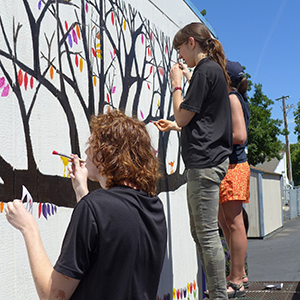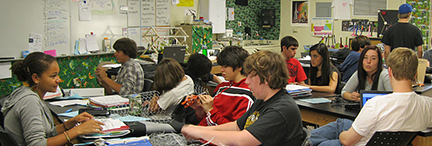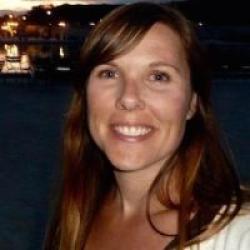
Teaching special education can be a tough gig, but it also gets a pretty bad rap. Yes, there are incredible challenges - widespread lack of resources, from staffing to curriculum; varied but typically overpowering levels of segregation; and a pervasive presumed incompetence of our students with disabilities - to name a few.
But, like our students themselves, teaching students with disabilities is highly underrated. In fact, my SPED colleagues and I often brag that our students are the coolest kids on campus, a sort of ‘best kept secret’ of the trade (except we’ve been shouting it from the rooftops for a while).
After years of facing these all too common barriers, I want to talk about the other best kept secret I’ve discovered in education: Project-Based Learning. Six years ago I stumbled into an opportunity to create a special education program at a small, PBL high school, and I gotta tell you: I don’t think I can ever go back. In part, because it has allowed me to ensure students are fully included in regular classes regardless of their disability, from day one.
More than this, though - and what I didn’t expect - is that PBL has transformed my vision of inclusive special education for students with even the most significant support needs. I’ll tell you a little bit about why, and then I’ll tell you where you can start.

Why is PBL Good for Students with Disabilities?
We know that the presence of differentiated instruction, interdisciplinary content, technology, collaboration, supports and accommodations, self-determination, and authentic assessment are key markers of successful inclusion in school communities. We see these elements in the foundations of Project Based Learning, and thus in PBL classrooms and schools, with incredible consistency.
Project Based Learning as a pedagogy is a great vehicle for meaningful inclusion because each of its project design elements and teaching practices are geared toward creating the kind of engaging and dynamic learning environment that are also known to best serve students with a wide range of disabilities.
As one of my former principals used to say whenever I geeked out on the ample opportunities for peer relationships and real-life skills that PBL provided my students: Yep; good teaching is good teaching. It is surprisingly as simple, and as radical, as that.
3 Tips to Get Started:
1. Collaborate!
There may be nothing more valuable in setting students up for success than planning with colleagues. As a special educator, I bring expertise on my students’ specific needs, their IEP goals, and the instructional strategies and supports that help them to learn and grow. My general education colleagues are the authority in their content areas, and they are invaluable in prioritizing which aspects of the standards are most important to make accessible. Our combined wisdom makes it fairly easy to anticipate needs and embed considerations for the diverse range of students at the beginning stages of project design.
You may have heard of this before – it's called Universal Design for Learning, and it’s one of the best ways to create a successful inclusive classroom. Better yet, doing this helps students without disabilities as well! One of my favorite common responses to a suggestion I make or a support I create in a planning meeting is “You know, I think many of the students would benefit from that.”

2. Differentiate Instruction
There are a number of ways to differentiate in PBL, such as offering voice and choice in student products to increase engagement and build on students’ strengths, or the various ways you can manage project implementation. At the same time, scaffolding projects effectively still leaves plenty of room for conventional differentiation strategies like frontloading vocabulary, providing visual supports, or offering texts with varied reading levels.
One of the big benefits of PBL is that it is also naturally differentiated. By allowing students to take different paths and explore different interest in a project, this means that at any given time, students in the same class may be working on very different things. This normalizes the students who need different things, alleviates the stigma of support that students often bring with them into the classroom, and reinforces a culture of individuality and self-management that leads to students’ owning their learning.
3. Embed IEP Goals into Projects
There are obvious opportunities to embed students’ specific academic IEP goals throughout their differentiated project pathway that allow you to address those skills with consistency, in addition to providing students with a sense of their genuine purpose.
Beyond this, I often have students with IEP goals such as augmentative communication, self-management, or nuanced social skills. In a PBL classroom, the emphasis on key success skills provides daily opportunities to work on these goals in an authentic and natural context!
For example, when students work in teams, they constantly have to practice communication, social skills, organization, self-management, self-determination, and self-advocacy. It's a special educator’s delight!
I’ve also been able to collaborate with speech therapists to create a modified oral communication rubric, which helps a student’s teachers meet them where they are at, teach them what they need to know, and track their progress in a variety of settings.
For those of you teaching PBL at a school with less than inclusive practices – be they special day classes, extensive pull-out, or even tracking – I encourage you to reach out to your special ed colleagues and invite any students in your grade level to fully participate in your next project. Follow my tips and these from an elementary special educator doing just that. I’m certain your perspective will be transformed as well.
Do you have questions, comments, or tips on using PBL with Special Education students? Please enter them below.

